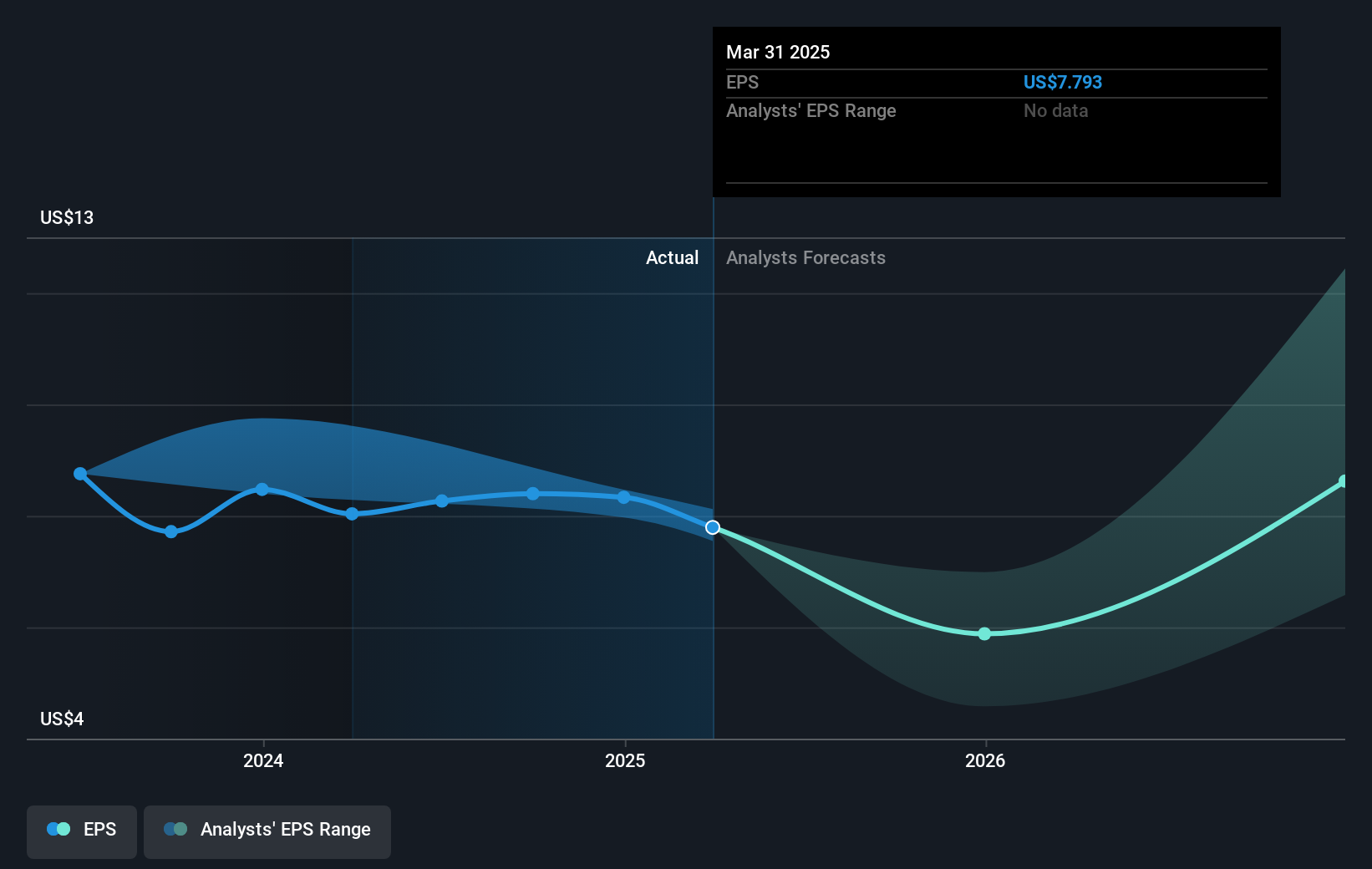LGI Homes' (NASDAQ:LGIH) earnings trajectory could turn positive as the stock ascends 5.7% this past week
Passive investing in an index fund is a good way to ensure your own returns roughly match the overall market. While individual stocks can be big winners, plenty more fail to generate satisfactory returns. Investors in LGI Homes, Inc. (NASDAQ:LGIH) have tasted that bitter downside in the last year, as the share price dropped 45%. That's disappointing when you consider the market returned 14%. Even if you look out three years, the returns are still disappointing, with the share price down39% in that time. Shareholders have had an even rougher run lately, with the share price down 32% in the last 90 days.
The recent uptick of 5.7% could be a positive sign of things to come, so let's take a look at historical fundamentals.
While markets are a powerful pricing mechanism, share prices reflect investor sentiment, not just underlying business performance. By comparing earnings per share (EPS) and share price changes over time, we can get a feel for how investor attitudes to a company have morphed over time.
Unhappily, LGI Homes had to report a 3.0% decline in EPS over the last year. This reduction in EPS is not as bad as the 45% share price fall. This suggests the EPS fall has made some shareholders more nervous about the business. The less favorable sentiment is reflected in its current P/E ratio of 6.56.
The graphic below depicts how EPS has changed over time (unveil the exact values by clicking on the image).

It's probably worth noting that the CEO is paid less than the median at similar sized companies. It's always worth keeping an eye on CEO pay, but a more important question is whether the company will grow earnings throughout the years. Before buying or selling a stock, we always recommend a close examination of historic growth trends, available here..

A Different Perspective
While the broader market gained around 14% in the last year, LGI Homes shareholders lost 45%. However, keep in mind that even the best stocks will sometimes underperform the market over a twelve month period. Unfortunately, last year's performance may indicate unresolved challenges, given that it was worse than the annualised loss of 7% over the last half decade. Generally speaking long term share price weakness can be a bad sign, though contrarian investors might want to research the stock in hope of a turnaround. It's always interesting to track share price performance over the longer term. But to understand LGI Homes better, we need to consider many other factors. Like risks, for instance. Every company has them, and we've spotted 2 warning signs for LGI Homes (of which 1 is potentially serious!) you should know about.
We will like LGI Homes better if we see some big insider buys. While we wait, check out this free list of undervalued stocks (mostly small caps) with considerable, recent, insider buying.
Please note, the market returns quoted in this article reflect the market weighted average returns of stocks that currently trade on American exchanges.
Have feedback on this article? Concerned about the content? Get in touch with us directly. Alternatively, email editorial-team (at) simplywallst.com.
This article by Simply Wall St is general in nature. We provide commentary based on historical data and analyst forecasts only using an unbiased methodology and our articles are not intended to be financial advice. It does not constitute a recommendation to buy or sell any stock, and does not take account of your objectives, or your financial situation. We aim to bring you long-term focused analysis driven by fundamental data. Note that our analysis may not factor in the latest price-sensitive company announcements or qualitative material. Simply Wall St has no position in any stocks mentioned.
① During the campaign period, US stocks, US stocks short selling, US stock options, Hong Kong stocks, and A-shares trading will maintain at $0 commission, and no subscription/redemption fees for mutual fund transactions. $0 fee offer has a time limit, until further notice. For more information, please visit: https://www.webull.hk/pricing
Webull Securities Limited is licensed with the Securities and Futures Commission of Hong Kong (CE No. BNG700) for carrying out Type 1 License for Dealing in Securities, Type 2 License for Dealing in Futures Contracts and Type 4 License for Advising on Securities.

English